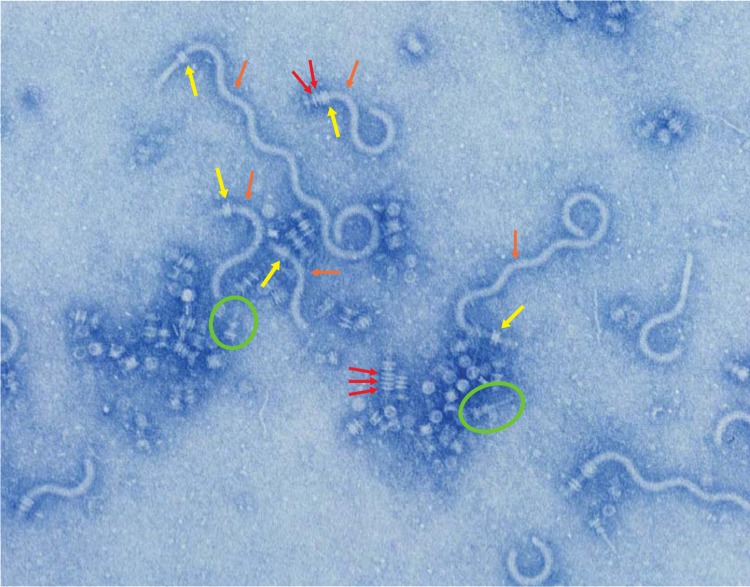FIG 3.
PL-ring assembly triggers a switch from rod polymerization to hook polymerization in the flgG*(G65R) ΔfliK ΔaraBAD::flgH+I+A+ background. The flgG* G65R mutant produces distal rods that fail to stop polymerizing at the WT length of ∼12 nm, forming aberrantly long rod structures termed filamentous rods. When the intact genes required for PL-ring assembly (flgH+, flgI+, and flgA+) are overexpressed in this background, rods of a variety of lengths are produced. Many P-rings (red arrows) are able to form along the length of the distal rod in this background. When a PL-ring (yellow arrows) forms, the switch from rod to hook polymerization occurs. Deletion of the hook length gene fliK results in hooks (orange arrows) that are hundreds of nanometers long, known as polyhooks. Two injectisome structures are circled in green. The injectisome shares many common structural features with the flagellum and possesses its own T3S system needed for the construction of the injectisome as well as to translocate effector proteins into host cells in order to establish infection.

